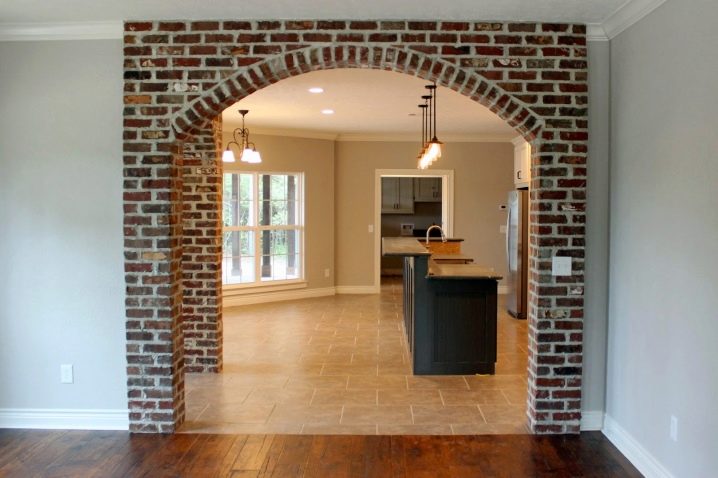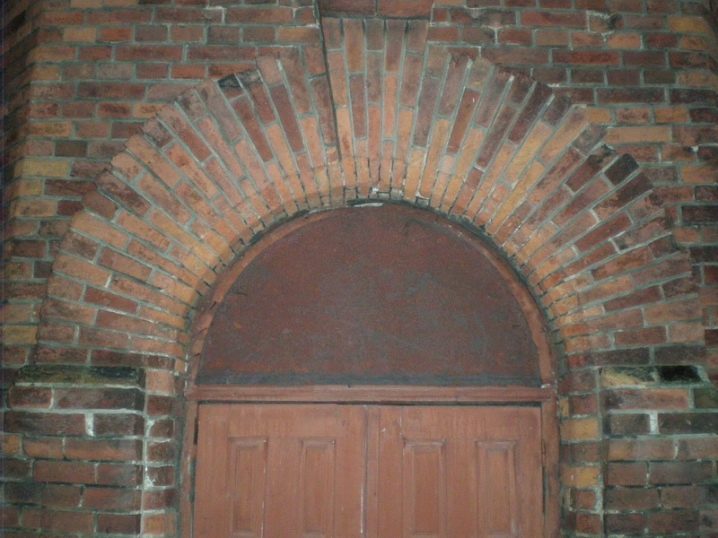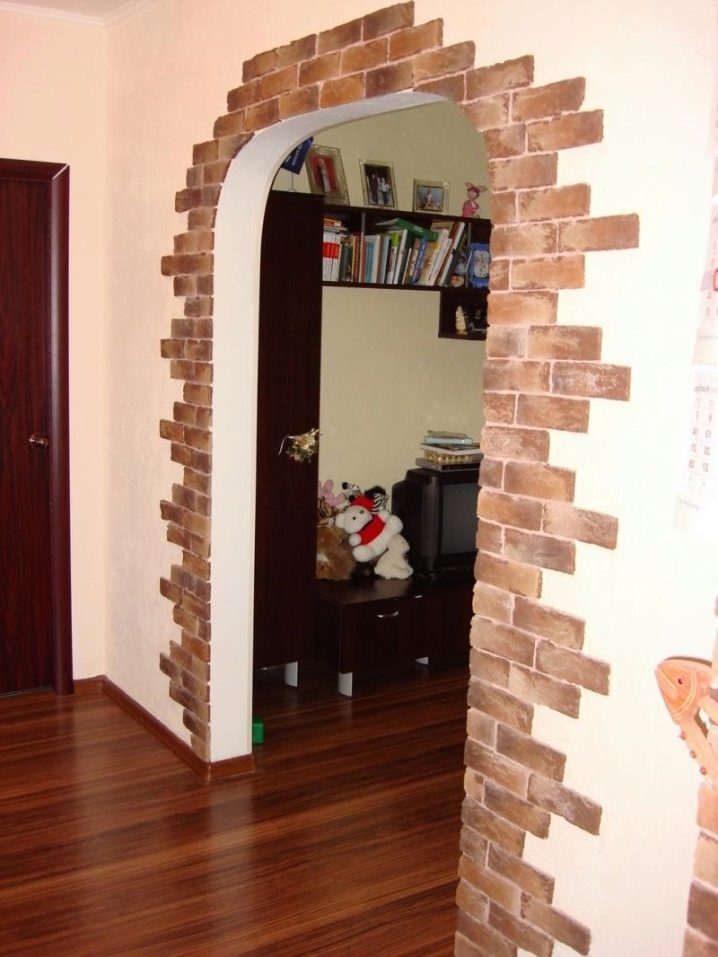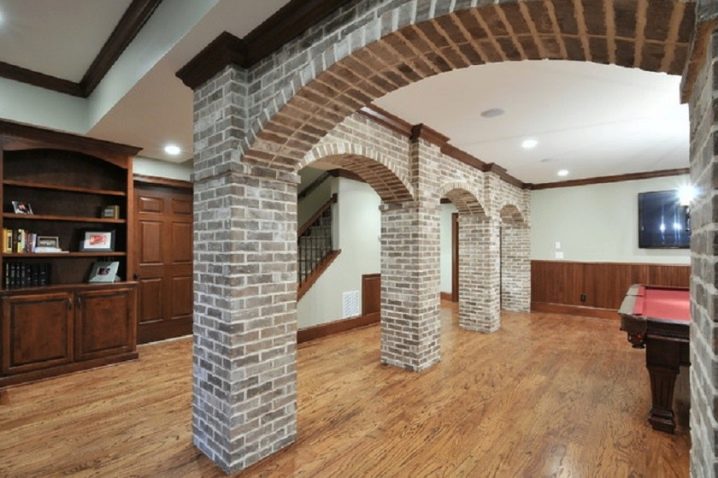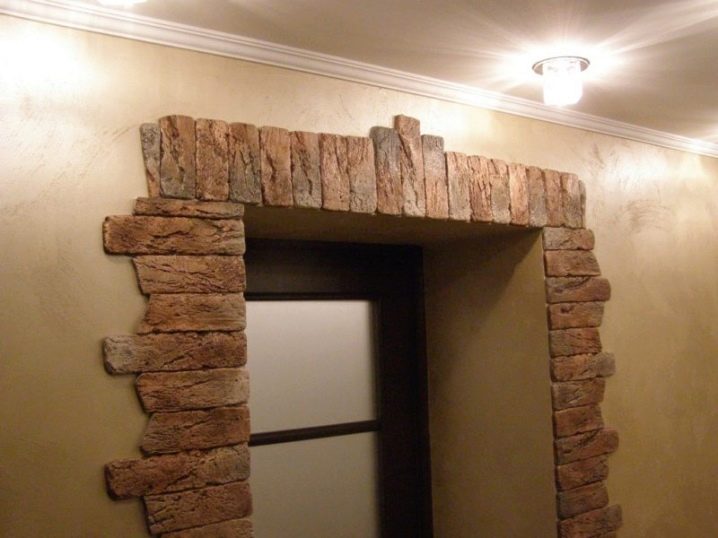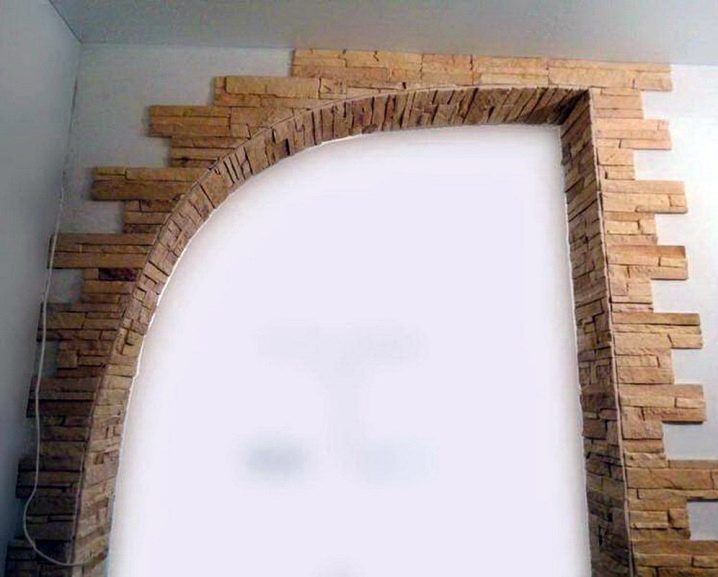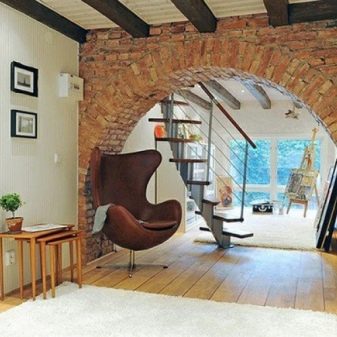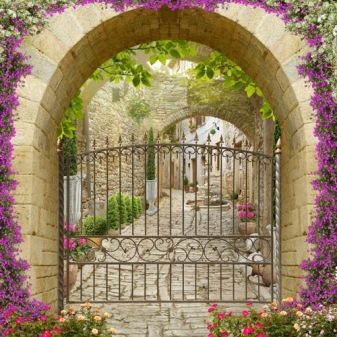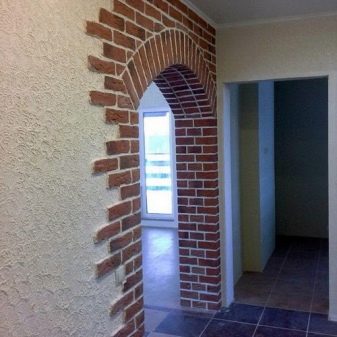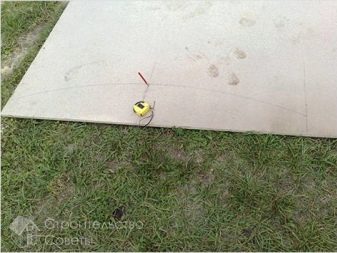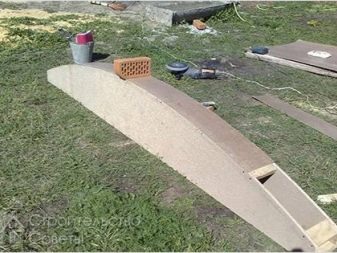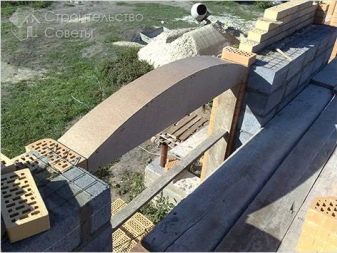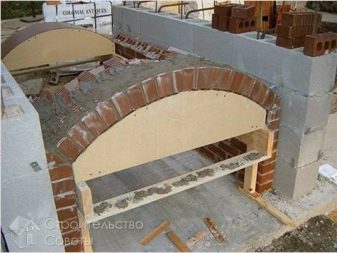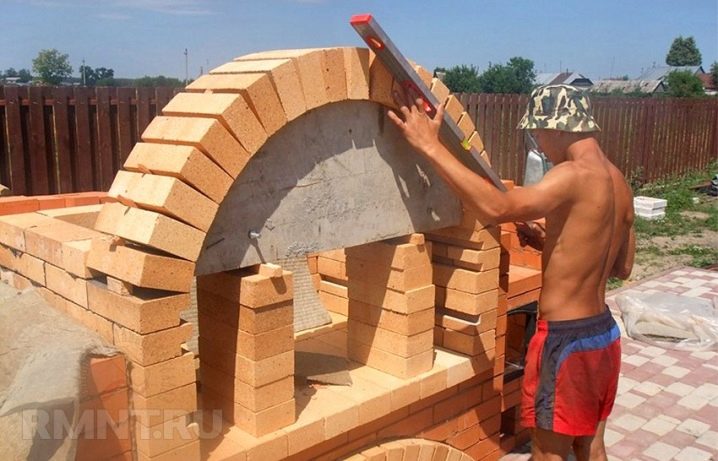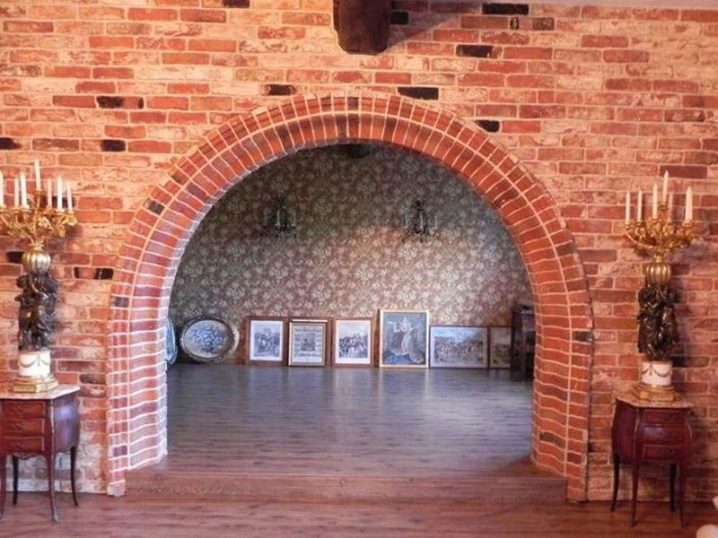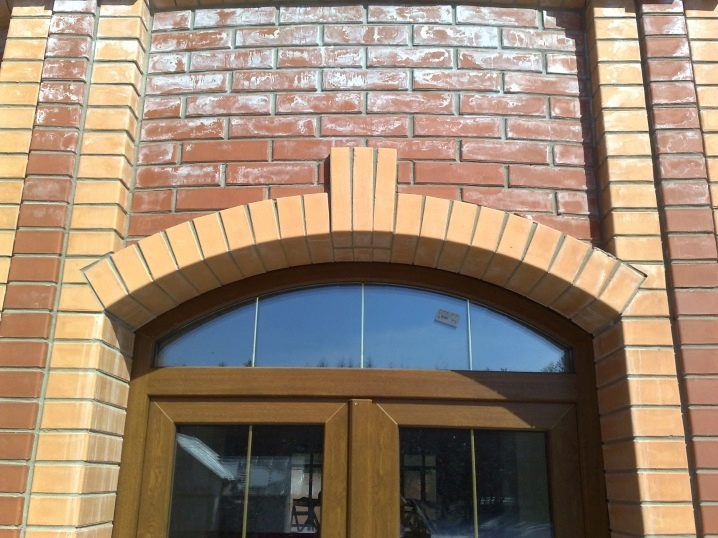Arches of brick: types, calculation of material and masonry

The arch is an architectural element and is a jumper in the wall opening. This beautiful design makes it more expressive appearance of the building or interior design. It not only effectively divides the room without a door, but is also able to distribute the load from the top point to the side. Brick arches are most often performed from the outside. And in the interior to create a rounded opening using drywall.
Species
A curved brick lintel, called an arch, can be performed in various ways, hence the variety of species.
- Classic,or full arch is a traditional semicircle. The arc, lined with bricks, is half a circle. This architectural element can be decorated with columns.
- The bow variant looks like a truncated, incomplete classical arch (only the upper part). The jumper in this case is less than the radius of the width of the door.
- Wedge arches fit the Gothic style. In this design, the bricks are laid out with a wedge and fastened with a “lock”.
- The lancet (broken) arch consists of two halves, the highest point of which is not a circle line, but the apex of a triangle in a smooth design. Gothic direction often uses windows with broken lines.
- In the style of "romanticism" is used a kind of opening with a straight upper part with rounded transitions to the side walls.
- In the "modern" there is a very wide arc in the form of a truncated cone.
- The portal (straight) rectangular arch is so simple that it can be built independently.
- Openings in the shape of an ellipse, decorate various styles of interior.
- Arches of irregular shape may be of unexpected appearance, for example, it may be a vintage garden design.
Advantages and disadvantages
Before you get the arches in the garden, in the courtyard or in the house, you should think about whether they are needed, weigh the pros and cons and only then carry out your plans. The advantages of such structures include:
- spectacular appearance, you can always choose a shape that matches the style of the interior;
- portals in the absence of doors can expand the volume, they allow you to see only a part of the territory outside, and the rest of the space draws imagination;
- architectural lintels are reliable, they evenly direct the vertical load sideways to the walls;
- The arches are universal, they can be decorated not only with a door or window opening, but also a fireplace, a gazebo, a gate, a wicket, even a blank wall.
As for flaws, for some people the lack of a door may seem uncomfortable. In addition, the arch obliges to maintain the overall style of the room. And who decides on an independent installation, will have to perform all operations in a strict order.
Installation
The arch of brick can be laid out by hand. It is necessary to begin with a choice of a place and a type of a design. The complexity of the execution depends on the model,but the sequence of construction works for all types of structures will be approximately the same:
- a sketch of the selected arch model is drawn;
- calculations are made;
- drawing up with dimension marks;
- according to the drawing of the chipboard is made template;
- the template is installed at the jumper;
- laid out from the brick arch;
- the laid out construction is fixed, fixed;
- the template is removed;
- for finishing work can be used plaster.
It is easy to build an arch, but in order for it to be stable, not to collapse, it must be folded correctly. For this, a clear sequence of construction work is observed. If the structure is wide, massive, foundation strengthening may be required.
What to do?
Building material for the manufacture of arched opening should be prepared in advance. Bricks are often used clinker or full-bodied ceramic (M-150). If there is no desire to independently shape the brick into a trapezoid, you can purchase a finished wedge-shaped stone. For furnace and fireplace arches, the solution is made with the addition of chamotte clay and sand; it has refractory properties.For other types of designs, you can choose other types of solutions with increased adhesion. For the template, you will need sheets of chipboard and bars.
Calculations and template creation
If a place is chosen and a model sketch is ready, you can proceed to the calculations. You need to know the size of the wall from floor to ceiling. Then note the height and width of the arch itself, calculate the radius. For the manufacture of the template you will need to find out the thickness of the supporting parts, measure the distance from the highest point of the structure to the ceiling, the height and width of the opening.
To calculate the lintel radius, one should add the square of its height and the square of the width / double height of the lintel (usually it is 1-2 rows of masonry). The radius is half the width of the opening. The same method is used for calculations for the template. The template is made slightly smaller than the arched structure so that during dismantling it does not damage the laying.
A half-circle drawing with a calculated radius is applied on a chipboard sheet. Then two identical semicircles are cut out and fastened with bars into a single structure. The template is temporarily mounted in the opening and fixed on the struts and wooden mounts (supports).
Using the arc length, the amount of brick needed is calculated., seams also need to be considered, but to make them as small as possible. The size of the brick wedge is chosen visually, as the work progresses the wedge-shaped shape of each stone is carved out. You can immediately purchase a wedge-shaped brick, but the errors of the masonry will be more noticeable than with an individual fit.
How to lay out?
After installing the template proceed to the brickwork of the opening. Bricks in the columns are laid out from the bottom up, from two sides at the same time. All seams are carefully filled with mortar, voids may further cause structural failure. The last brick is hammered in the central upper part, a “lock” is installed, it will fix the structure. The template is dismantled only when the entire structure is completely ready. Then the excess solution is removed, the seams are leveled, the masonry is prepared for facing work. For finishing, you can choose decorative plaster.
Common mistakes
The arch should distribute the load from the center to the column; the incorrectly built structure can crack and sometimes collapse. Most often during installation they make the following mistakes:
- the load will be distributed unevenly if the very wide opening does not have sufficient height;
- it is impossible to replace the template with metal corners, chipboard, unlike metal, contributes to the natural shrinkage of the whole structure;
- late disassembly of the template can swell from the moisture of the solution and partially destroy the structure;
- a weak foundation creates the danger of a subsidence of the structure, which leads to its destruction;
- large radii should be especially carefully calculated, since such structures are under special loads.
If you take into account all possible mistakes, make efforts and efforts, you can build a beautiful arch with your own hands. This decorative structure will decorate the yard, garden or apartment interior.
How to make an arch of brick, see in the video.
